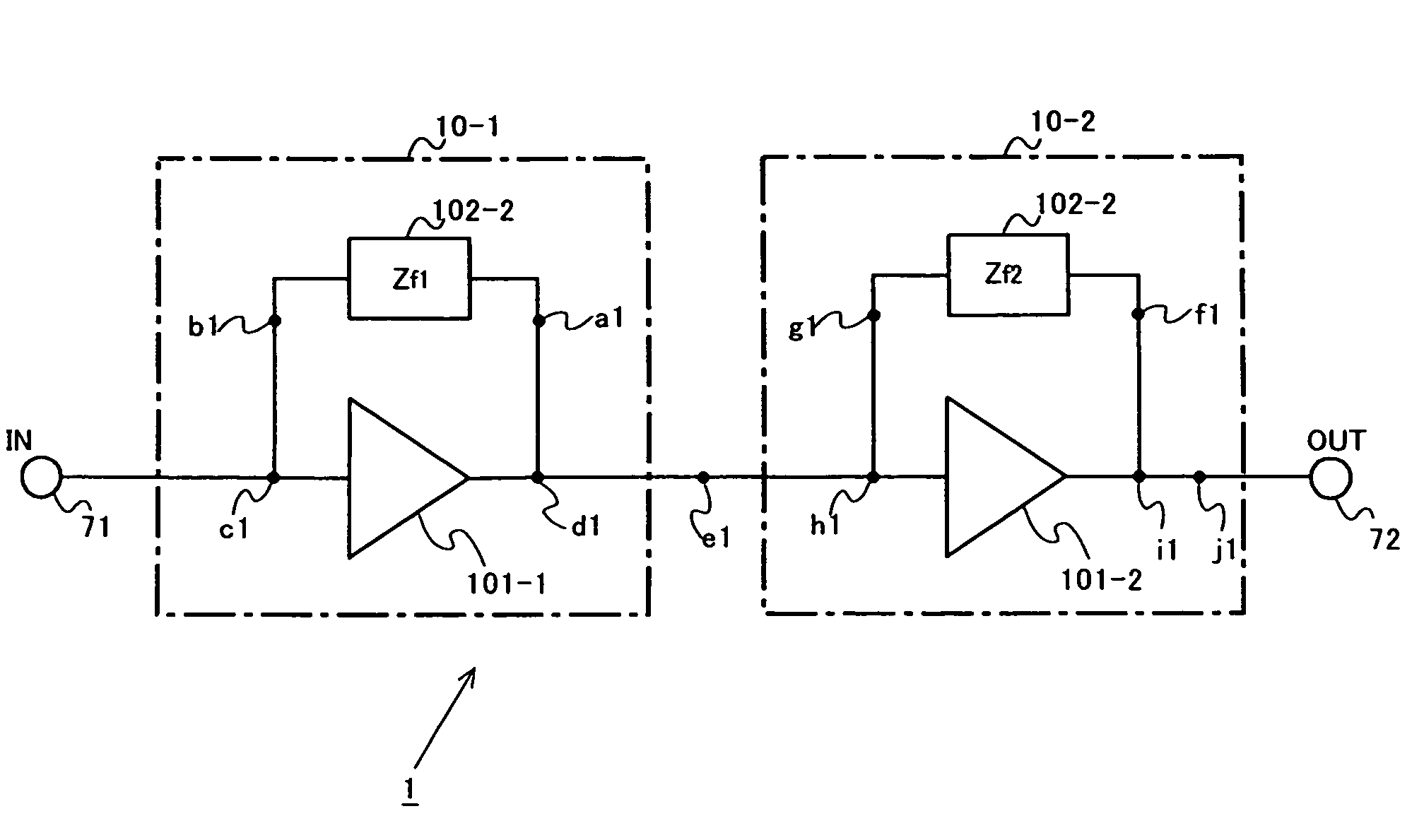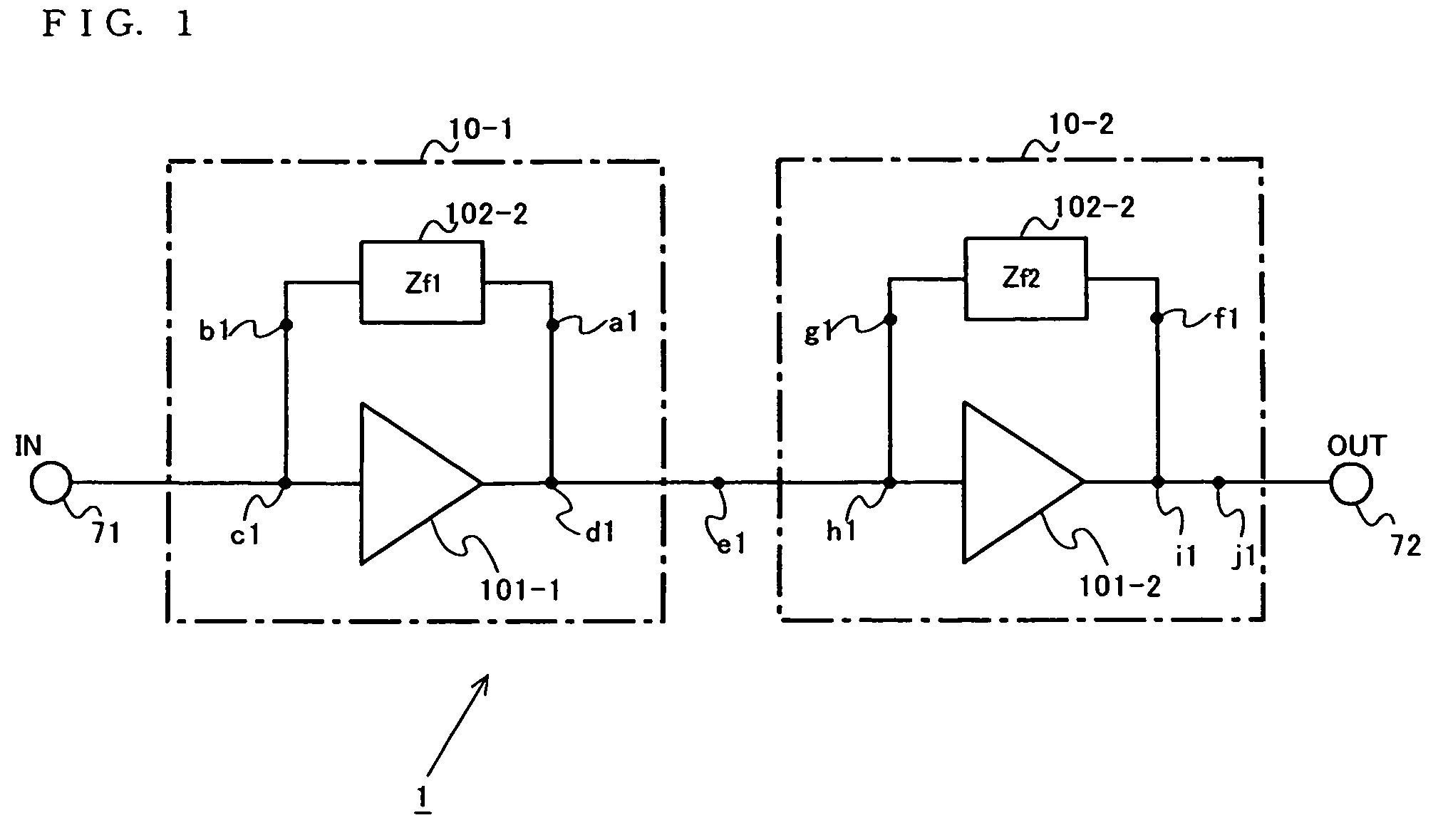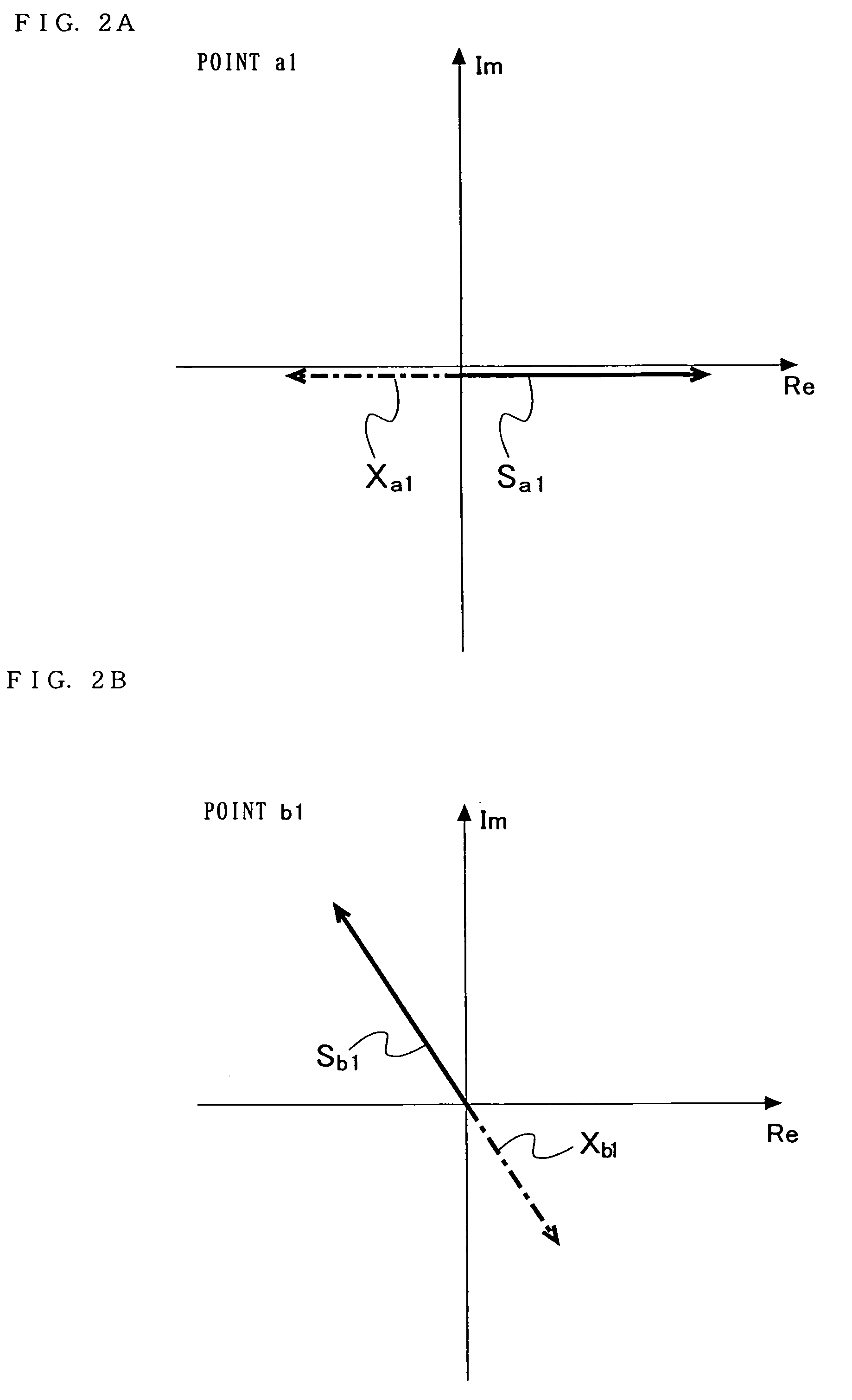Multistage amplifying devices, and reception device and transmission device using the same
a multi-stage amplifying and transmission device technology, applied in the direction of amplifier modification, negative-feedback circuit arrangement, amplifier, etc., can solve the problems of power consumption increase, inter-modulation distortion, and two challenges that cannot be solved simultaneously, and achieve low power consumption and remove white noise
- Summary
- Abstract
- Description
- Claims
- Application Information
AI Technical Summary
Benefits of technology
Problems solved by technology
Method used
Image
Examples
first embodiment
[0114]FIG. 1 is a block diagram illustrating a structure of a multistage amplifying device 1 according to a first embodiment of the present invention. In FIG. 1, the multistage amplifying device 1 comprises a first parallel feedback amplifier 10-1, a second parallel feedback amplifier 10-2, an internal terminal 71, and an output terminal 72. The first parallel feedback amplifier 10-1 includes a first amplification section 101-1, and a first parallel feedback section 102-1. The second parallel feedback amplifier 10-2 includes a second amplification section 101-2 and a second parallel feedback section 102-2.
[0115]As illustrated in FIG. 1, the multistage amplifying device 1 has the two amplifier connected in cascade, each amplifier including the parallel feedback section as a feedback circuit. The first amplification section 101-1 and the second amplification section 101-2 are inverting amplifiers. The first parallel feedback section 102-1 and the second parallel feedback section 102-2...
second embodiment
[0229]FIG. 10 is a diagram illustrating an exemplary structure of a multistage amplifying device 2 according to a second embodiment of the present invention. The multistage amplifying device 2 of the second embodiment of the present invention of FIG. 10 comprises a first parallel feedback amplifier 10-1, a second parallel feedback amplifier 10-2, and a third parallel feedback amplifier 10-3. In FIG. 10, the same components as those of the first embodiment are referenced with the same reference numerals as those of FIG. 1.
[0230]In the second parallel feedback amplifier 10-2 of FIG. 10, a bias circuit 216 is explicitly illustrated. The bias circuit 216 is connected to the base of the third transistor 211 and the base of the fourth transistor 212.
[0231]As illustrated in FIG. 10, the multistage amplifying device 2 is different from the multistage amplifying device 1 of the first embodiment in that the parallel feedback amplifier 10-3 is additionally connected in cascade. Hereinafter, an...
third embodiment
[0256]In a third embodiment of the present invention, a multistage amplifying device comprising first to N-th amplifiers (N is a natural number of 2 or more).
[0257]The k-th amplifier has a k-th amplification section and a k-th feedback section which has a reactance component, changes the phase of an output signal of the k-th amplification section, and feeds the resultant output signal back to the input side of the k-th amplification section. Note that, in the third embodiment, a multistage amplifying device 3 in which first to N-th parallel feedback amplifiers are connected in cascade will be described with reference to FIG. 13.
[0258]FIG. 13 is a circuit diagram illustrating a structure of the multistage amplifying device 3 of the third embodiment of the present invention. The multistage amplifying device 3 of FIG. 13 comprises the first to N-th parallel feedback amplifiers. The k-th (k is a natural number of 1 to N) parallel feedback section 10-k includes a k-th amplifier 101-k and...
PUM
 Login to View More
Login to View More Abstract
Description
Claims
Application Information
 Login to View More
Login to View More - R&D
- Intellectual Property
- Life Sciences
- Materials
- Tech Scout
- Unparalleled Data Quality
- Higher Quality Content
- 60% Fewer Hallucinations
Browse by: Latest US Patents, China's latest patents, Technical Efficacy Thesaurus, Application Domain, Technology Topic, Popular Technical Reports.
© 2025 PatSnap. All rights reserved.Legal|Privacy policy|Modern Slavery Act Transparency Statement|Sitemap|About US| Contact US: help@patsnap.com



